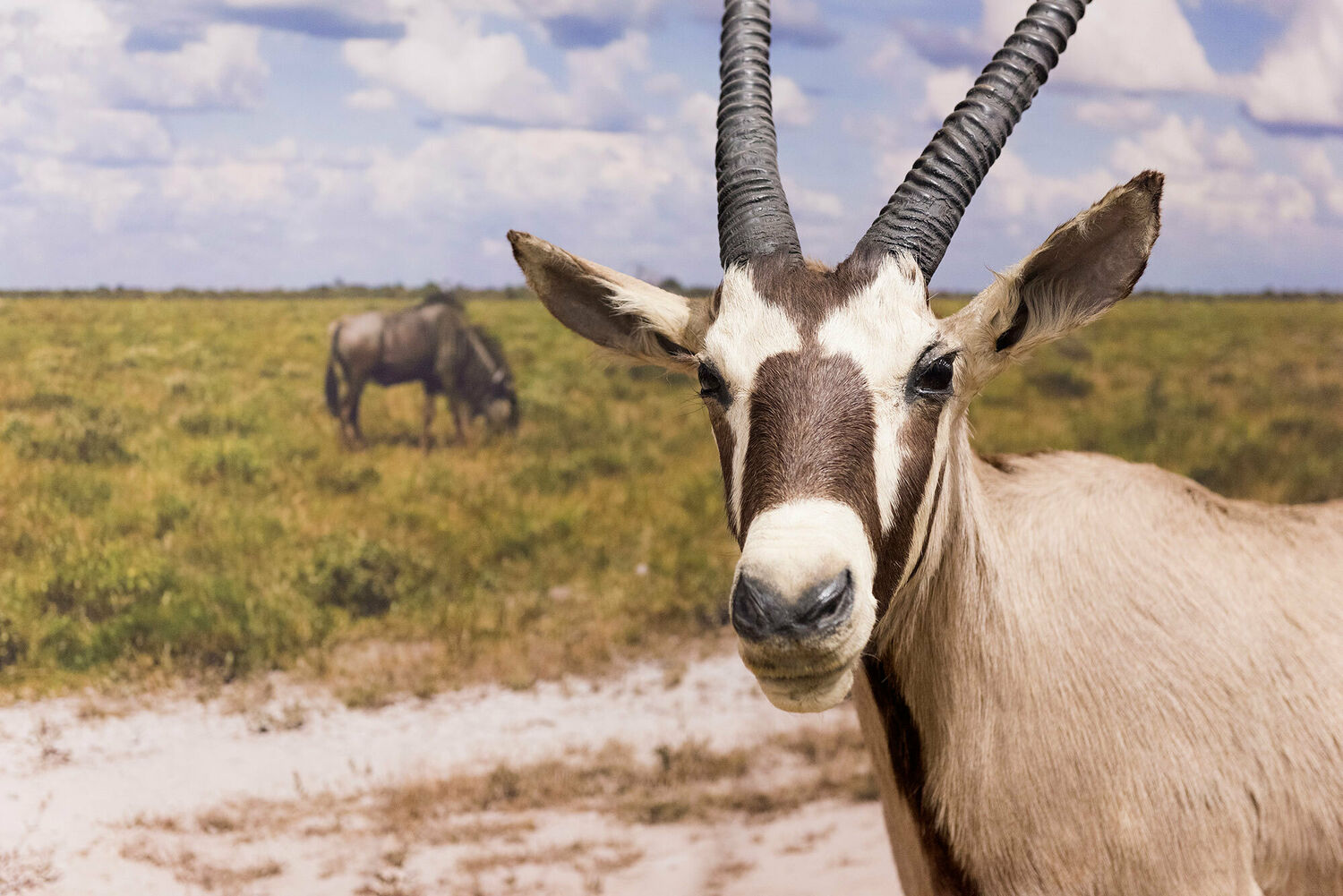21 Mar 24 — 2 Feb 25
Model of a southern giraffe (Giraffa giraffa)
When the hare is supposed to bring the people the news of their immortality, he turns it into the opposite and thus causes their finiteness. Numerous communities in southern Africa still tell the tale of the hare and the moon today and it is representative of the changing relationship between humans and nature. The exhibition focuses precisely on this and provides insights into past and present stories of southern Africa. The presentation of the unique diversity of large mammals in particular has its place, as do the magnificent rock paintings from early history – and also a critical examination of the German colonial era. Relationships between humans and animals are presented here, from the Stone Age through the early modern period and its ethnological evidence to modern photo and hunting safaris. The aim is to arouse curiosity and fascination and to strengthen the protection of biodiversity and the recognition of cultural diversity.
The southern part of Africa, in particular Namibia, is once again increasingly becoming the focus of Germany's attention. This ranges from economic aspirations and increasing tourism to the German colonial era with the genocide of the Herero and Nama. The critical view from a current perspective shows that the interplay between man and nature, which has existed for thousands of years, is changing in the region. The exhibition aims to trace precisely this change and turn to the animal-human stories of southern Africa in several historical stages. Its title, which is derived from the myth of the moon and the hare and is familiar to the San, Nama, Damara and others, is emblematic of this change.
The natural and cultural science exhibition combines different aspects and perspectives:
The presentation of the diversity of large mammals in particular, such as lions, rhinos and giraffes, has its place as well as the oldest pictorial evidence.High-resolution scans of prehistoric rock paintings frame the presentation of the animals and illustrate the long history of interaction between humans and animals, ranging from the Stone Age to the modern safaris of today. The cultural-historical level leads the visitor from the mediation of different ways of life and their involuntary change through German colonialism to the genocide by the German protection force – and then gives a picture of today's Namibia and current projects of reappraisal and reconciliation.
On the path to nowadays, the exhibition closes with a presentation of the journey to Namibia of ethnologist Dr. Jutta MacConnell. Ethnological identity and Rememberance in Nation-building are the focus of her research. She is an honorary member of a community of the Damara. In preparation of the exhibition, she travelled to Namibia to conduct interviews in 2023. The diverse speakers guide visitors through the modern Namibia, following its independence 34 years ago. Topics focus on everyday culture, tradition and modernity, women and society, life in rural communities, nature conservation and man's role as well the confrontation with the colonial past, the genocide of Herero and Nama and the reconciliation with Germany. The recorded encounters, especially with Herero, Nama and Damara bid farewell to the visitors along with the question of how Namibia and Germany can reconcile.
The protection of biodiversity and the appreciation of cultural diversity are the core themes of the exhibition, which seeks an answer to the question of a shared, egalitarian future.
In addition to the objects on display, the exhibition will also offer a series of hands-on stations for exploration. A catalog and an audio tour through the exhibition are also planned. An extensive accompanying program is currently being developed.



all photos: Museum Wiesbaden ⁄ Bernd Fickert
The exhibition offers numerous opportunities for active exploration. Animal sounds can be explored, animal tracks examined and questions solved on the puzzle wall. In addition to the myth of the moon and the hare, which gave the exhibition its name, other stories can be discovered at a myth listening station. Observation stations with binoculars, puzzles and an activity and painting table are aimed particularly at children. Children's texts guide you through the entire exhibition and give you a tip or two for solving the quiz.
Information and booking for adults:
Fon 0611 ⁄ 335 2240, fuehrungen@museum-wiesbaden.de
Information and booking for schools and kindergarten groups:
0611 ⁄ 335 2185, edu@museum-wiesbaden.de